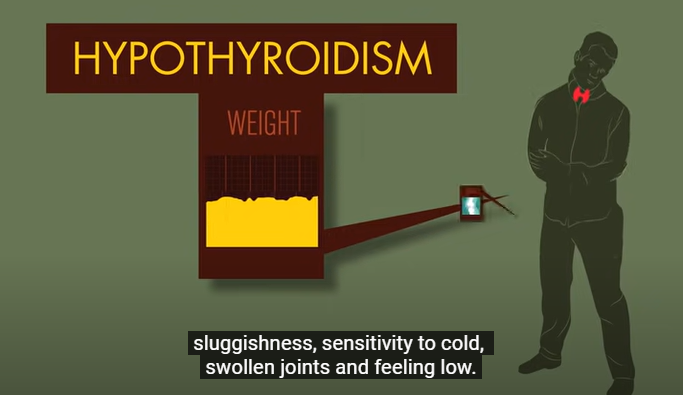Understanding NAD – Does it Reverse Aging?
Have you ever wondered why some people seem to age gracefully? In contrast, do others struggle with fatigue, memory issues, and health problems as they age? The answer might lie in a tiny but mighty molecule called NAD. Understanding NAD is important? This cellular superhero works behind the scenes to keep your body running smoothly, but here’s the catch – your NAD levels naturally decline as you age.

Understanding NAD
Don’t worry, though! Understanding NAD and how it works helps you make informed decisions about supporting your health. Let’s dive into everything you need to know about this fascinating molecule. Is NAD the ultimate anti-aging molecule that could transform your health after 30? Let’s dive in.
NAD stands for Nicotinamide Adenine Dinucleotide, one of the most essential molecules in your body that you’ve probably never heard of. Think of NAD as the fuel that powers your cellular engines. So, this is why understanding NAD is so crucial. Without it, your cells can’t function properly.
This remarkable molecule surfaced in 1906, but scientists have only recently begun understanding how crucial it is for healthy aging. NAD acts as a helper molecule (cofactor), allowing your cellular machinery to work efficiently. Every cell in your body depends on NAD to generate energy and perform essential functions. Let’s dig a little deeper.
What makes NAD so special is that it helps activate proteins called sirtuins, which act like cellular repair crews. These proteins help fix damaged DNA, regulate metabolism, and keep cells healthy. Without adequate NAD levels, these repair processes slow down significantly.

Now that you understand NAD, let’s explore why your age matters regarding this vital molecule.
When Should You Begin Using NAD?
Congratulations! If you’re in your thirties or early forties, you’re at the perfect age to start thinking about NAD support. During this decade, your NAD levels gradually decline, dropping by 10-15% compared to your twenties, when prevention becomes your best strategy.
Ages 30-40: The Prevention Years
People in this age group often notice:
- Slightly decreased energy levels
- Longer recovery times after exercise
- Minor changes in sleep quality
- Early signs of metabolic changes
Starting NAD support during this phase can help maintain cellular health before a significant decline occurs.

Ages 40-55: The Action Years
NAD support becomes increasingly important. By age 40, your NAD levels may have dropped by 20-30%, making the effects more noticeable. People in this age range often experience more significant energy dips, slower metabolism, and increased concerns about aging.
The good news is that this age group typically sees excellent results from NAD support strategies because their bodies are still highly responsive to interventions.
Ages 55: The Restoration Years
NAD+ levels can be 50% lower in older adults than in youth. This dramatic decline contributes to many age-related health concerns, including cardiovascular issues, cognitive changes, and decreased muscle strength.
However, research shows that even significant NAD deficiencies can be addressed with proper support, making this a crucial time to focus on restoration strategies.
Understanding these age-related changes helps explain why NAD has become an important topic in health and longevity research.
How Your Body Makes and Uses NAD
Your Body’s NAD Production System
Your body is brilliant when it comes to making NAD+. It uses three different pathways to ensure you always have enough of this vital molecule:
The Recycling System: Your body constantly recycles NAD from waste products. When enzymes use NAD as fuel, they create a byproduct called nicotinamide (NAM). Your cells then convert this NAM back into NAD through a recycling process led by an enzyme called NAMPT.
The Fresh Production System: Your liver can make NAD from scratch using an amino acid called tryptophan (the same compound in turkey that makes you sleepy). This process is called “de novo” synthesis.
The Vitamin Pathway: Your body can also make NAD from vitamin precursors like nicotinic acid (a form of vitamin B3) that you get from food.

This sophisticated system ensures that your cells always have access to NAD. Still, as you age, these production systems become less efficient.
Where NAD+ Lives in Your Cells
NAD+ doesn’t just float around randomly in your cells. Instead, there are three central locations:
- The cytoplasm: The gel-like substance that fills your cells
- The mitochondria: Your cellular powerhouses that generate energy
- The nucleus: Where your genetic information is stored
Each location has its own NAD supply, which your body regulates independently. This compartmentalization ensures that each part of your cell gets what it needs to function correctly.
Now, let’s explore what happens to all this NAD once your body makes it.
The Three Types of Enzymes That Use NAD+
Your body uses NAD through three main groups of enzymes, each serving different but equally important functions:
Sirtuins: Your Cellular Repair Crew
Sirtuins are like the maintenance workers of your cells. They use NAD to:
- Repair damaged DNA
- Regulate metabolism
- Manage stress responses
- Control aging processes
When you have adequate NAD levels, sirtuins work efficiently to keep your cells healthy and functioning optimally.
PARPs: Your DNA Damage Response Team
PARP enzymes (17 different types) act as emergency responders when your DNA gets damaged. They consume NAD to:
- Detect DNA damage quickly
- Recruit repair proteins to fix problems
- Maintain genetic stability
While PARPs are essential for health, they can consume large amounts of NAD when dealing with significant DNA damage.

NADases: The Cellular Regulators
These enzymes include CD38, CD157, and SARM1, and they help regulate various cellular processes:
- CD38: Controls immune cell activation and metabolism
- CD157: Involved in immune function and inflammation
- SARM1: Important for nerve cell health and injury response
Understanding these enzyme systems helps explain why maintaining adequate NAD levels becomes increasingly important as we age.
Age-Related Health Concerns Linked to NAD+ Decline
Metabolic Changes
As NAD levels drop, many people notice changes in their metabolism. These can include:
- Decreased energy production
- Slower fat burning
- Blood sugar regulation challenges
- Reduced muscle mass over time
Cardiovascular Health
NAD plays an essential role in heart and blood vessel health. Lower levels may contribute to:
- Decreased cardiovascular endurance
- Changes in blood pressure regulation
- Reduced ability to handle physical stress
Cognitive Function
Your brain is one of the most energy-demanding organs in your body, making it particularly sensitive to NAD decline. It affects:
- Memory formation and recall
- Focus and concentration
- Mental clarity and processing speed
- Overall cognitive resilience
Physical Strength and Recovery
NAD is crucial for muscle function and repair. As levels decline, people often experience:
- Longer recovery times after exercise
- Decreased muscle strength
- Reduced physical endurance
- Slower healing from injuries
These changes don’t happen overnight, but understanding them can help you make proactive choices about your health.

Evidence-Based NAD Support Strategies
Natural Ways to Support NAD Production
Dietary Approaches:
- Include foods rich in tryptophan (turkey, chicken, fish, eggs)
- Consume foods with niacin (mushrooms, tuna, green peas)
- Add foods containing nicotinamide riboside precursors
Lifestyle Factors:
- Regular exercise (particularly strength training and cardio)
- Adequate sleep (7-9 hours per night)
- Stress management techniques
- Intermittent fasting (under medical supervision)
Avoiding NAD Depletion:
- Limit excessive alcohol consumption
- Reduce exposure to environmental toxins
- Manage chronic inflammation
- Maintain healthy blood sugar levels
Supplementation Considerations
Several NAD precursors are available as supplements. However, it is essential to work with healthcare providers to determine what’s appropriate for your needs and health status.
Before considering any supplementation, discuss your options with a qualified healthcare professional who can evaluate your specific situation.
NAD and Circadian Rhythm Disruption
Your body’s internal clock, or circadian rhythm, is closely connected to NAD levels. This relationship works both ways – NAD+ helps regulate your sleep-wake cycle, while proper sleep patterns support healthy NAD production.

How Circadian Disruption Affects NAD:
- Shift work can disrupt NAD production cycles
- Poor sleep quality reduces NAD synthesis
- Irregular eating patterns affect NAD metabolism
- Blue light exposure at night can interfere with NAD regulation
Supporting Healthy Circadian Rhythms:
- Maintain consistent sleep and wake times
- Get natural sunlight exposure during the day
- Limit blue light exposure in the evening
- Create a relaxing bedtime routine
- Keep your bedroom cool and dark
Addressing circadian rhythm disruption can significantly support your body’s natural NAD production and utilization.
Frequently Asked Questions About NAD
What does NAD+ stand for?
NAD+ stands for Nicotinamide Adenine Dinucleotide. The “+” indicates that it’s oxidized, the active version your cells can use for energy production and other vital functions.
What is the difference between NAD and NADH?
NAD+ and NADH are two forms of the same molecule. NAD+ is the oxidized form that accepts electrons during cellular processes, while NADH is the reduced form that carries those electrons. Your body constantly converts between these two forms as part of normal cellular metabolism.
Why is NAD called a dinucleotide?
NAD+ is a dinucleotide because it consists of two nucleotides joined together. Each nucleotide contains a sugar, a phosphate group, and a nitrogenous base. The “di” prefix means “two,” referring to this double structure.
What is the role of NAD in cellular metabolism?
NAD+ plays a central role in cellular metabolism by acting as an electron carrier in energy-producing reactions. It helps convert nutrients from food into usable energy (ATP) and supports hundreds of enzymatic reactions throughout your body.
How does NAD+ work?
NAD+ works by accepting and donating electrons in cellular reactions. It acts as a cofactor for enzymes, meaning it helps these proteins function properly. When enzymes need to transfer electrons during chemical reactions, NAD+ provides the mechanism for this transfer.

What is NAD+, and why is it important?
NAD+ is a crucial molecule found in every living cell that serves as a helper for enzymes involved in energy production, DNA repair, and cellular maintenance. It’s essential because, without adequate NAD+ levels, your cells can’t function efficiently, leading to decreased energy, impaired repair processes, and accelerated aging.
Can circadian rhythm disruption affect NAD+ levels?
Yes, circadian rhythm disruption can significantly impact NAD+ levels. Your body’s production and utilization of NAD+ follow natural daily cycles. When these cycles are disrupted by irregular sleep, shift work, or excessive light exposure at night, they can reduce NAD+ synthesis and impair cellular function.
Are there any side effects to supporting NAD+ levels?
While NAD+ support is generally considered safe for healthy adults, some people may experience mild side effects such as nausea, fatigue, or digestive discomfort, particularly when starting supplementation. Always consult with a healthcare provider before beginning any new health regimen.
Key Takeaways: Your NAD+ Action Plan
NAD+ represents one of the most exciting aging and health research areas today. This remarkable molecule affects virtually every aspect of cellular function, from energy production to DNA repair. While NAD+ levels naturally decline with age, understanding this process empowers you to make informed decisions about supporting your cellular health.
Remember these essential points:
- NAD+ decline begins in your thirties and accelerates with age
- Multiple lifestyle factors can support healthy NAD+ levels
- Proper sleep and circadian rhythm management are crucial
- Individual needs vary based on age, health status and lifestyle
The most important step is to work with qualified healthcare providers who can help you develop a personalized approach to supporting your NAD+ levels and overall health. Whether you’re in your thirties looking to prevent age-related decline or older and seeking to restore cellular function, understanding NAD+ gives you valuable insights into the aging process and potential strategies for healthy longevity.

Your journey toward better cellular health starts with knowledge. You have the foundation to make informed decisions about NAD+ and your long-term wellness.
Disclaimer: This information is for educational purposes only and should not replace professional medical advice. Always consult qualified healthcare providers before changing your health regimen or starting new supplements.
Rachele & Team
mybluegenes.com
rachele@mybluegenes.com
References
Routine For Healthy Hair Archives – The Red Lipstick Foundation. https://www.theredlipstickfoundation.org/topic/routine-for-healthy-hair/
Anti tumor | Interstellar Blends | Activate Your Super Powers!. https://theinterstellarplan.com/product-tag/anti-tumor/
NAD+ vs. NADH | Benefits, Differences, Effects Together. https://neuroganhealth.com/blogs/news/nadh-vs-nad
Can You Test for Herpes Without an Outbreak? – Maple. https://www.getmaple.ca/blog/can-you-test-for-herpes-without-an-outbreak/
Why Clarity II has the best technology for Hair Removal, and how doest it work? – Lotus @ QUEENSWAY MEDICAL. https://www.queenswaymedical.com/post/why-clarity-ii-has-the-best-technology-for-hair-removal-and-how-dest-it-work
6 Tips To Avoid Jet Lag. https://www.oddysee.co/post/6-tips-to-avoid-jet-lag
Why Are There Blue Street Lights in the UK? – Redway ESS. https://www.redwayess.com/why-are-there-blue-street-lights-in-the-uk/
Understanding the Critical Role of NAD in Your Body – Urban Splatter. https://www.urbansplatter.com/2023/08/understanding-the-critical-role-of-nad-in-your-body/
Mitolyn as a Powerful Ally in Weight Management – Ashe Cottage Holiday Lets. https://www.ashecottage-holidaylets.co.uk/mitolyn-as-a-powerful-ally-in-weight-management/
The Science Behind Synchronicity Health’s NAD+ Booster: Unlocking the Power of Cellular Regeneration | Synchronicity Health. https://synchronicity.health/blogs/news/the-science-behind-synchronicity-healths-nad-booster-unlocking-the-power-of-cellular-regeneration
Alpilean Reviews : [Updated 2023] Bad Side Effects or Safe Pills That Work? – Alpilean Reviews: Does it Really Work for Weight Loss?. https://www.alpilean-reviews.com/alpilean-reviews-updated-2023-bad-side-effects-or-safe-pills-that-work/
The Role Of Insurance Companies In Phoenix Accident Claims. https://techdailytimes.com/the-role-of-insurance-companies-in-phoenix-accident-claims/
Benefits on health of calcium carbonate molar mass. https://healthypost.co.uk/calcium-carbonate-molar-mass/
Protein Found in Tardigrades: The Key to Slowing Down Aging. https://kumdi.com/science/protein-found-in-tardigrades-the-key-to-slowing-down-aging/
Frequently Asked Questions – Rider’s Relief™. https://www.ridersrelief.com/pages/frequently-asked-questions
Herbs to Boost Testosterone: Natural Solutions- Testo Genie. https://testogenie.com/herbs-to-boost-testosterone/






